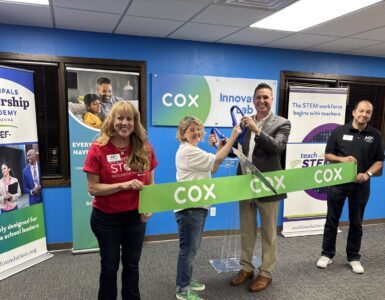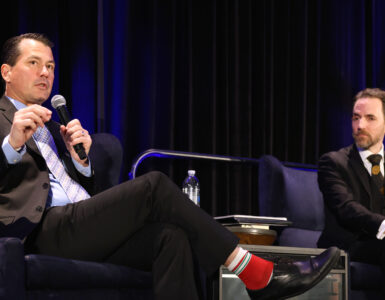When Globe Unified School District launched its new robotics initiative during the 2013-2014 school year, the high school program only had five students on the team. Since then, the program has expanded to over 200 students and multiple grade levels; students from Globe High School even attended a robotics world championship in Houston this past spring.
It’s a considerable evolution for the STEM program within a relatively short amount of time, said Jerry Jennex, Superintendent of Globe Unified School District.
“I don’t know if they knew what they were starting,” Jennex said of the initial group of students on the team. “I didn’t know how it was going to go, but it exceeded our wildest expectations.”
The robotics program exists thanks to the effort of Jennex and Robert Armenta, Principal of Globe High School, who successfully persuaded the district board to fund a varsity robotics coach starting in 2013. But that investment only covered a portion of the expenses. According to Jennex, getting the team involved with FIRST Robotics—a national robotics competition for students—would cost $6,000 just to get started. That didn’t include other potential costs, like putting together a workspace for the students.
“We didn’t have the funds, and so we knew we had to seek business partners,” Jennex said.
One of the program’s crucial partners since its inception is Resolution Copper, a subsidiary of global mining company Rio Tinto, which began supporting the GUSD robotics program in 2014. The company started off by making donations to cover the registration fees for FIRST Robotics, but soon expanded their financial contributions to help cover things like shop infrastructure and marketing for the program. Some employees even spend time working hands-on with students in the program.
“We’re really active from a day-to-day partnership, going into the shop and engaging with the students and the coaches and the teachers,” said Bryan Seppala, a Stakeholder Engagement Analyst for Resolution Copper. “We’d love to do more of that in the coming years.”
Jennex said that while he estimates the number of organizations supporting GUSD’s robotics program is now in “double digits,” and includes other large companies such as Boeing and Freeport McMoRan, Resolution Copper has been one of their steadiest supporters over the years.
Thanks to substantial community and business investments over the last few years, GUSD’s robotics program is almost unrecognizable from its humble origins. In addition to a competitive team called “The Midnight Cicadas,” the program now includes new opportunities for younger students, such as a LEGO robotics program and a middle-school program. The program is even opening its doors to students from smaller nearby districts who otherwise may not have an opportunity to participate in this sort of experience.
“Seeing that growth in five years is tremendous,” Seppala said. “That’s due to not just our partnership and our donation… that’s due to the commitment from the coaches, the mentors, folks like me that are working with kids, and the kids themselves.”
Jennex said he believes the robotics program has a tangible impact on the skills that Globe students are developing.
“One of the most awesome things about the First Robotics program is its interpersonal skill-building potential,” he said. “You have to build relationships with other teams, you have to problem solve with other teams… it sounds kind of like the real world, doesn’t it?”
That, of course, is in addition to the range of STEM skills students learn while participating in the program. Jennex said that several high school graduates who participated in the robotics program have since moved onto career and college pathways in engineering and similar fields. That could have a real impact on the community, said Kyle Bennett, principal adviser of communications at Rio Tinto.
“The skills and what they’re being trained to learn are transferable across so many industries,” Bennett said. “For kids to have an opportunity to get exposed to these types of skills is going to provide them with life-changing opportunities.”
The mining industry in particular will continue to need employees with STEM-related skills, Seppala said.
“STEM is such a key component of our future workforce, and how we can implement STEM education into our future training and our future mine is so critical,” he said.
Jennex said he’s thrilled with how the robotics program has grown.
“To see the community, get behind robotics, support it… it’s just been a really exciting process,” Jennex said. “We just couldn’t be prouder of the identity that they’ve formed, the reputation they’ve built.”
















Add comment